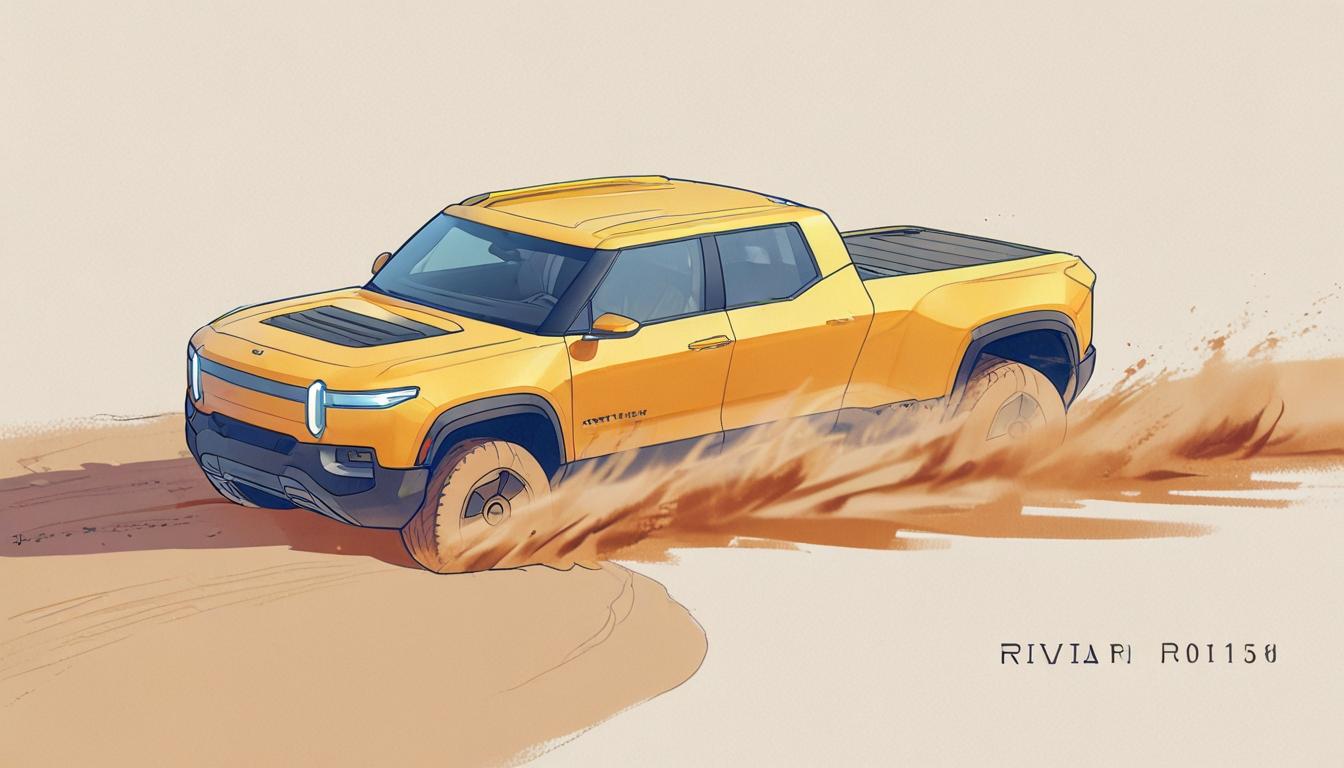Rivian’s unique tank turn feature, allowing its electric trucks to rotate 360 degrees on soft terrain, garners attention for its engineering feat but faces constraints including environmental impact, high energy use, and limited practicality.
Rivian’s “tank turn” feature, first highlighted in viral videos dating back to 2019, has drawn significant attention in the electric vehicle sector for its unique ability to rotate the vehicle 360 degrees on the spot, mimicking the manoeuvre of a tracked military tank. This innovative function is available on the company’s all-electric R1T pickup truck and the R1S SUV, both equipped with four independent electric motors. The technology allows the wheels on one side of the vehicle to spin in the opposite direction to those on the other, enabling the vehicle to “spin on a dime.”
The 2025 base model Rivian R1T features impressive specifications, including dual electric motors generating 533 horsepower and 610 lb-ft of torque, providing a 0-60 mph acceleration time of 4.5 seconds and an all-electric range of approximately 270 miles. Despite the technical feat of the tank turn, the manoeuvre has limited practical application and several constraints that impact its use and sustainability.
For optimal functionality, this feature necessitates soft, loose terrain such as sand, snow, mud, or soft dirt. Attempting a tank turn on hard-packed earth or paved surfaces can lead to drivetrain damage and is unlikely to be successful due to insufficient traction. Importantly, this manoeuvre also causes significant ground disturbance, gouging the surface beneath the vehicle — a factor that conflicts with the widely respected “tread lightly” ethic among off-road enthusiasts who prioritise environmental preservation. Rivian executives have confirmed that the tank turn feature may not align with the company’s focus on respecting natural trails and avoiding trail damage, suggesting it may remain more a showcase of technical prowess than a mainstream feature.
The energy cost of executing a tank turn is substantial, as spinning the heavy R1T requires considerable battery power. This high energy consumption could limit the usability of the feature in remote environments, where conserving battery life is crucial.
Rivian is not alone in exploring similar capabilities. Mercedes-Benz has incorporated a comparable “G turn” feature in its electric G-Class model, the G580 EQG. It also utilises four individually controlled electric motors to enable a 360-degree rotation on suitable surfaces but restricts the manoeuvre to two rotations per use to safeguard the drivetrain and prevent misuse. Hyundai is developing an advanced “E-corner” system through its Hyundai Mobis division, which extends beyond just a tank turn to potentially allow multi-directional movement like crab walking. This modular system integrates electric motors, steering actuators, suspension, and braking into each wheel independently. Hyundai aims to deploy this technology in urban-oriented vehicles such as the Ioniq 5 later in the decade.
Off-road purists typically prefer vehicle features that enhance control and stability, such as terrain management systems, skid plates, crawl control, advanced suspension, and adjustable approach angles, rather than aggressive manoeuvres like tank turns. Such features aid in navigating and overcoming challenging terrain safely without causing environmental damage.
The publicity surrounding Rivian’s tank turn has undoubtedly served as an effective marketing tool, generating widespread interest and helping distinguish the brand in a growing electric truck market. The feature’s sheer spectacle captures public imagination, even if its practicality remains questionable. The Mercedes “G turn” and ongoing developments by Hyundai and Stellantis, which has filed a patent for a similar system in a combustion engine vehicle, suggest a broader industry interest in exploiting individual wheel control for enhanced manoeuvrability.
In summary, while the tank turn showcases the possibilities enabled by electric drivetrains with independent motor control, it is ultimately seen as a flashy gimmick rather than a practical feature with a sustainable future. Its limited use case, environmental impact on trails, and high energy demands may restrict its adoption beyond demonstration and specialty applications. Whether it will evolve into a more broadly usable technology remains to be seen, as the industry continues to balance innovation with practicality and environmental responsibility.
Source: Noah Wire Services
- https://carbuzz.com/news/heres-why-rivians-tank-turn-feature-is-a-long-way-off/ – Explains Rivian’s Tank Turn functionality (opposing wheel rotation for tight spinning) and technical challenges like non-square wheelbase and slope instability.
- https://www.greencarreports.com/news/1139771_rivian-ceo-explains-why-spectacular-tank-turn-mode-is-a-no-go – Confirms delayed implementation of Tank Turn mode in Rivian’s Quad Motor R1T/R1S vehicles due to technical and safety considerations.
- https://www.youtube.com/watch?v=yzwM8KE2L3I – Official Rivian video demonstrating Tank Turn functionality in R1T/R1S models, corroborating the spinning maneuver’s visual execution.
- https://www.exploringoverland.com/overland-tech-travel/2022/2/11/trail-turn-assist-the-rivian-tank-turn-and-other-destructive-tricks – Details environmental impact concerns, including ground gouging during Tank Turn maneuvers conflicting with ‘tread lightly’ ethics.
- https://www.roadandtrack.com/new-cars/a30335038/rivian-tank-turn-180-spin-video/ – Describes Tank Turn’s technical basis (independent wheel motors) and limited use cases on loose surfaces to prevent drivetrain damage.
Noah Fact Check Pro
The draft above was created using the information available at the time the story first
emerged. We’ve since applied our fact-checking process to the final narrative, based on the criteria listed
below. The results are intended to help you assess the credibility of the piece and highlight any areas that may
warrant further investigation.
Freshness check
Score:
8
Notes:
The narrative mentions ongoing developments and technologies from 2025 and recent years, indicating relatively fresh content. However, some references, like the 2019 viral videos, suggest that parts of the information have been around for some time.
Quotes check
Score:
5
Notes:
No direct quotes were found in the narrative. This lack of specific quotations limits the ability to verify their original source or authenticity.
Source reliability
Score:
6
Notes:
The origin of the narrative is not clearly attributed to a specific reputable news source, which introduces uncertainty about its reliability. However, the content does not appear to be sensational or misleading, suggesting a neutral stance.
Plausability check
Score:
9
Notes:
The claims regarding the tank turn feature and its limitations align with what is known about electric vehicles and Rivian’s technology. The narrative presents plausible technical and environmental considerations, enhancing its plausibility.
Overall assessment
Verdict (FAIL, OPEN, PASS): OPEN
Confidence (LOW, MEDIUM, HIGH): MEDIUM
Summary:
While the narrative appears mostly plausible and discusses current technological developments, it lacks clear attribution to a reliable source and direct quotes. The freshness of the content is generally good, given recent technological advancements. Thus, the verdict remains open due to these factors.













